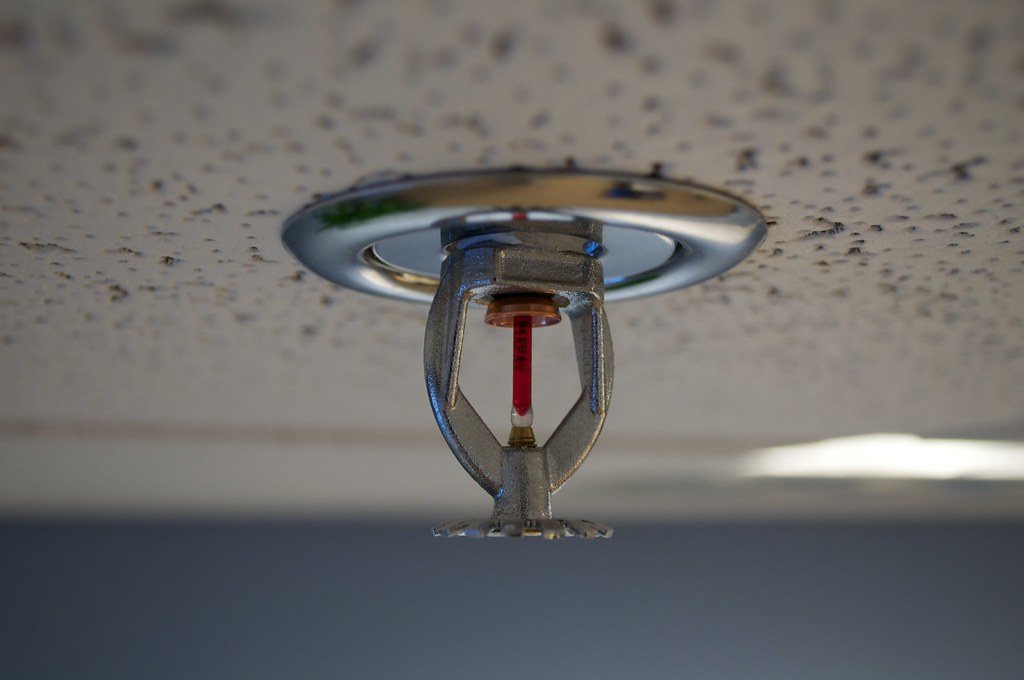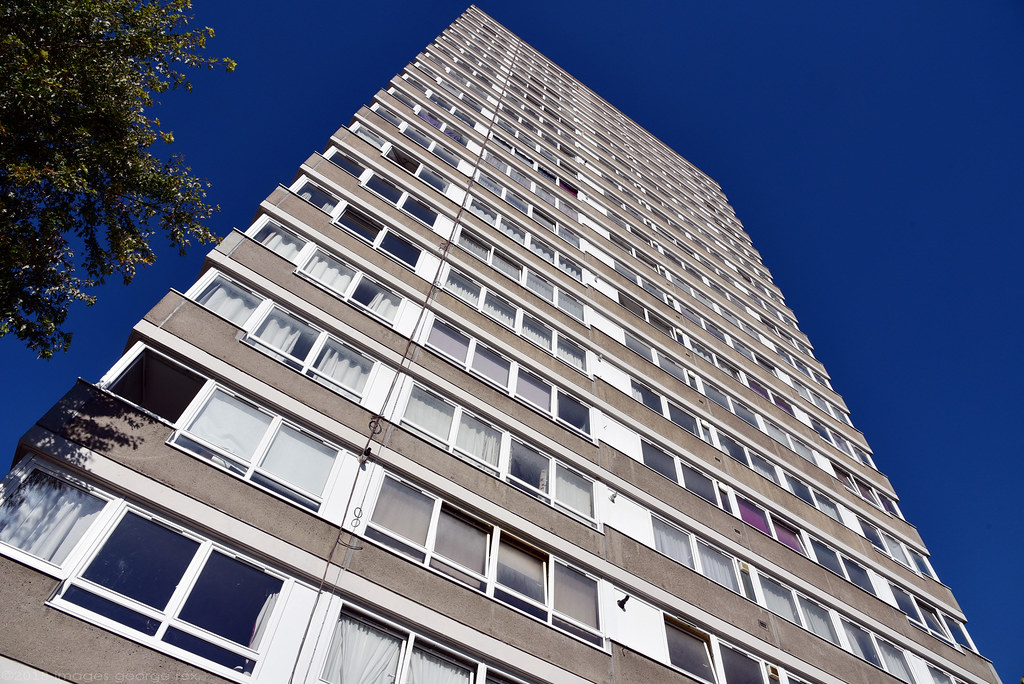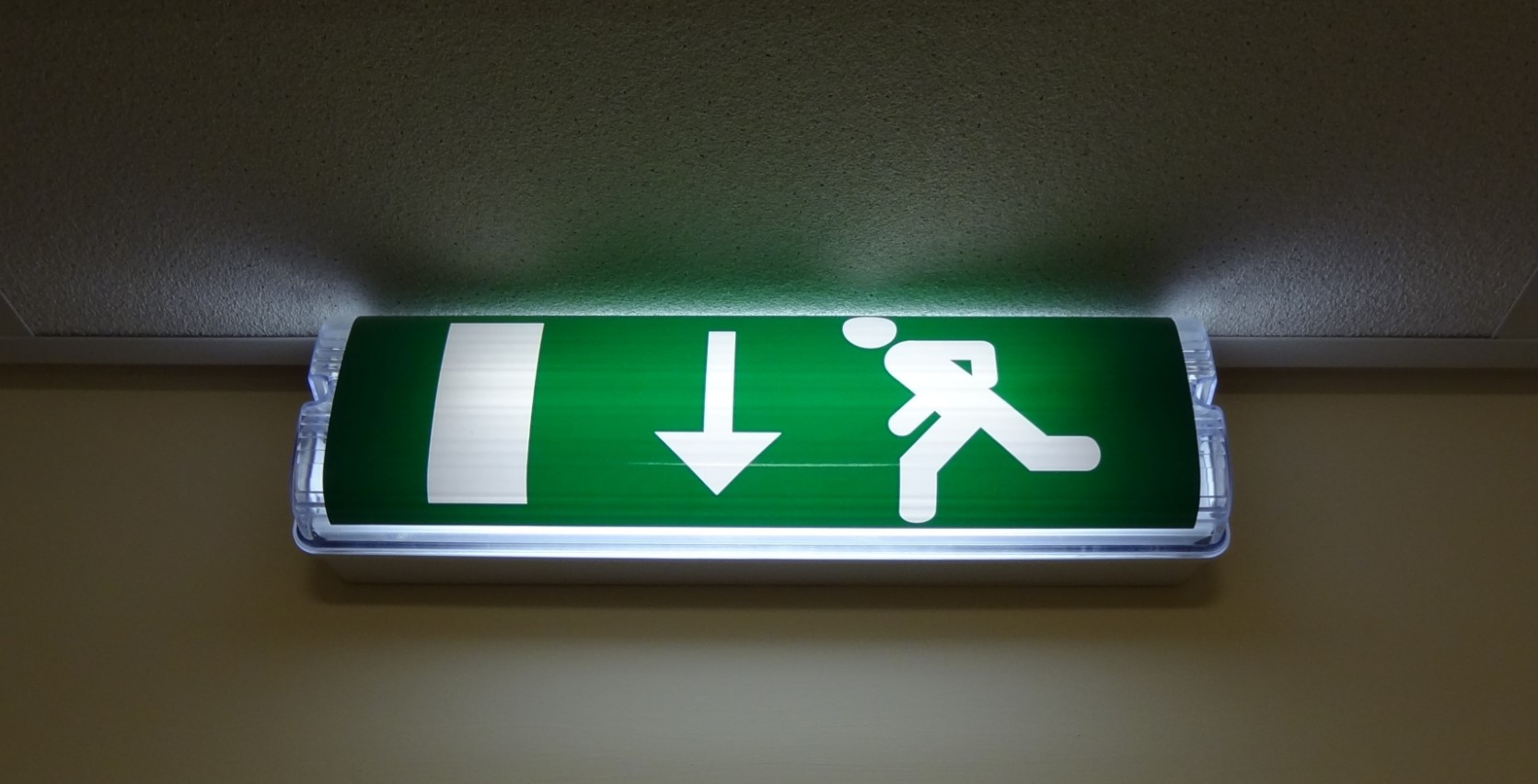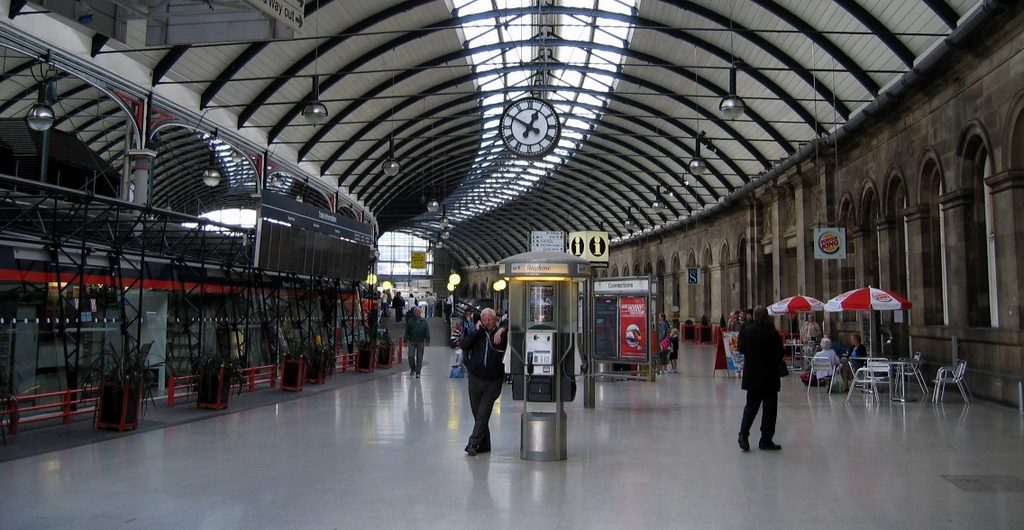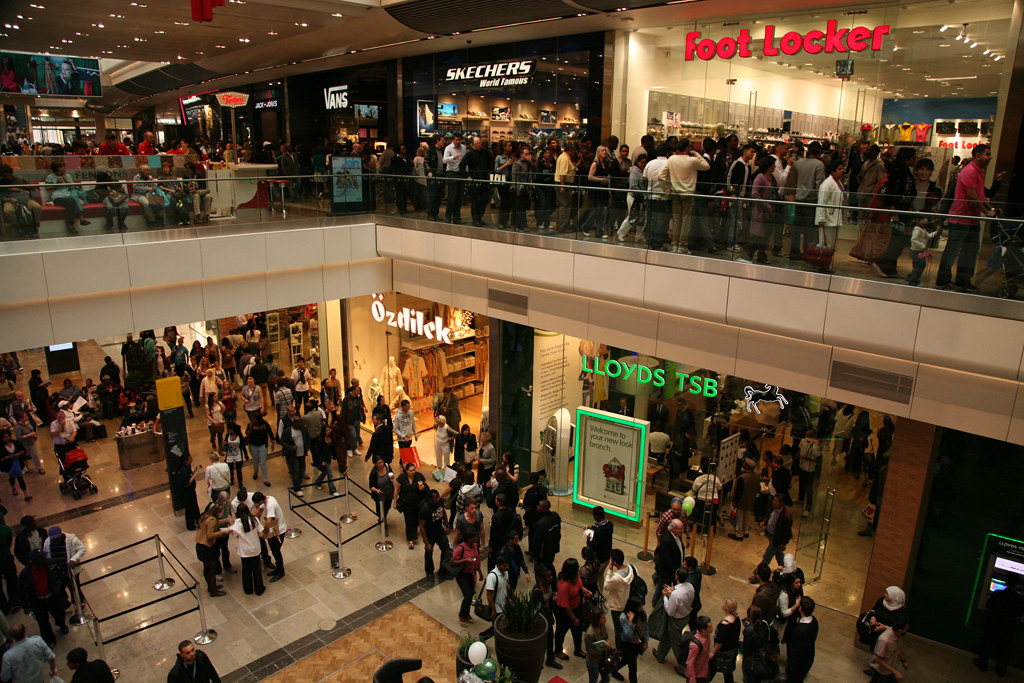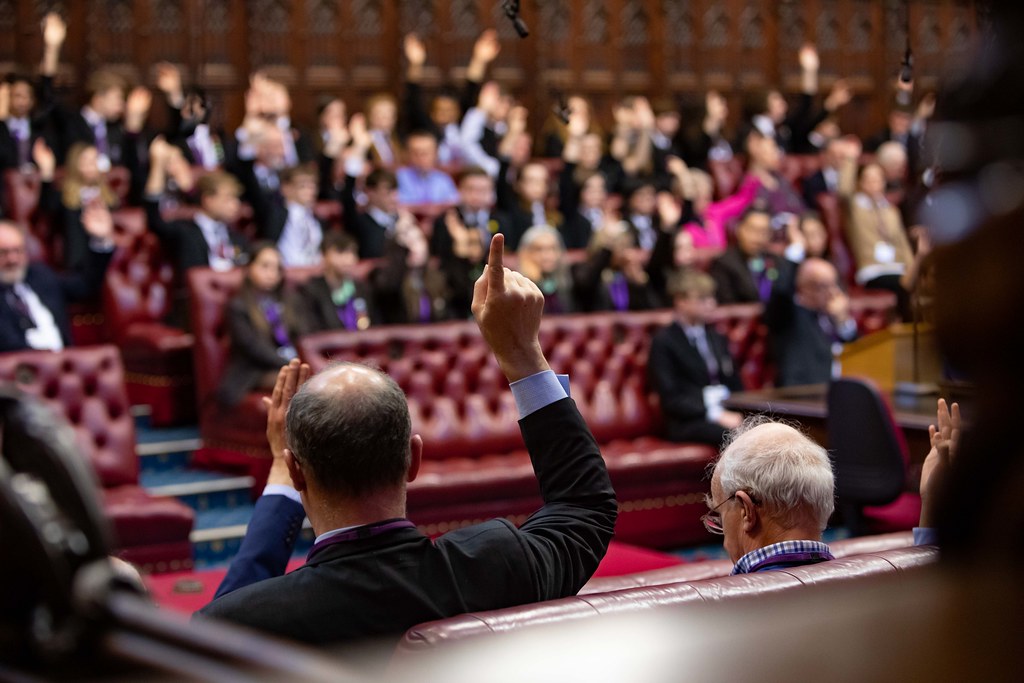Grace Period Announced for Second Staircases in High-Rise Buildings
The government has introduced a grace period for developers building high-rise residential buildings. This comes after a previous announcement requiring all new buildings over 18 metres to include a second staircase.
Transitional Period Explained
In a written statement, Secretary of State for Levelling Up, Housing and Communities Michael Gove confirmed a 30-month transitional period for developers. This period starts from the date the government publishes and confirms changes to Approved Document B (ADB).
How the grace period will work
Developers will have 30 months to choose between building according to current regulations or adapting their plans to include a second staircase as outlined in the updated ADB.
After 30 months, all new building regulation applications must comply with the updated guidance requiring second staircases.
Existing Approved Applications
Building applications that were approved before the new guidance and do not include a second staircase will have an 18-month window for construction to begin. If construction does not commence within 18 months, developers will need to submit a new application following the updated guidance.
The definition of "sufficient progress" for construction to meet the 18-month deadline is aligned with the Building (Higher-Risk Buildings Procedures) (England) Regulations 2023. This means construction progress must involve pouring concrete for foundations or pilings.
Safety of Existing Buildings
Gove emphasized that this grace period allows already approved single-staircase buildings to proceed without delay. He assured the public that existing and upcoming single-staircase buildings are not inherently unsafe if built according to relevant standards, well-maintained, and properly managed.
The government expects lenders, managing agents, and insurers to act accordingly and avoid imposing stricter requirements on existing single-staircase buildings.
Background and Industry Response
Calls for clear guidance on the second staircase requirement had been growing in the construction industry. Initially, the requirement only applied to high-rise buildings exceeding 30 metres. However, Gove lowered the threshold to 18 metres following consultations with experts.
This change brought England into alignment with other countries regarding second staircases in high-rise buildings. However, some industry bodies voiced concerns about the potential impact on housing development.
The Home Builders Federation (HBF) welcomed the announcement of the transitional arrangements. They acknowledged the government's reinforcement of the safety of existing standards and expressed the industry's commitment to working with the government to maintain progress in building safety.
Next Steps
The Building Safety Regulator is currently finalizing the design details for second staircases in ADB. The government will provide a further announcement on this soon.
Fire Safety Explained: How Fire Sprinklers Work
Fire sprinklers are a ubiquitous sight in many buildings today. Their presence offers a sense of security, but how exactly do these unassuming devices work? This blog post dives into the mechanics of fire sprinklers, exploring their activation methods, duration, sensitivity, and potential for accidental discharge.
Heat Triggered Response
Unlike smoke detectors, fire sprinklers react solely to heat. This targeted approach ensures they don't activate due to everyday cooking activities or minor temperature fluctuations. Two primary types of sprinkler heads exist:
- Glass Bulb Systems: These heads contain a heat-sensitive liquid that expands with rising temperatures. Once a predetermined temperature (typically around 68°C) is reached, the liquid expands enough to shatter the glass bulb, releasing a valve and allowing pressurized water to flow through the sprinkler head.
- Fusible Link Systems: These systems utilize a low-melting-point alloy link to hold back pressurized water. When exposed to fire's heat, the link melts, releasing the water and triggering the sprinkler.
Targeted Water Discharge
Fire sprinklers are designed to operate independently. Only the sprinkler heads in the immediate vicinity of the fire will activate, minimizing water damage to unaffected areas. The duration of water discharge depends on the building's hazard level:
- Light Hazard Occupancies (LH): Up to 30 minutes
- Ordinary Hazard Occupancies (OH): Up to 60 minutes
- High Hazard Occupancies (HH): Up to 90 minutes
In most cases, a fire will be extinguished before the water supply is depleted. Once the fire is under control, firefighters will manually shut down the sprinkler system.
Sensitivity and Placement
The sensitivity of a sprinkler head is calibrated based on its location. Residential and office settings utilize sprinklers designed to activate at lower temperatures (around 68°C). Conversely, industrial settings with higher ambient temperatures might have sprinklers with higher activation thresholds (between 79°C and 141°C). This strategic placement minimizes false alarms triggered by non-fire related heat sources.
Fire Safety Collaboration
Although fire sprinklers are a powerful fire suppression tool, they don't replace smoke detectors. Smoke detectors serve the crucial role of alerting occupants to a fire, enabling safe evacuation. Fire sprinklers then work alongside smoke detectors to control and extinguish the flames.
Accidental Discharge
While rare, accidental discharge of a sprinkler system can occur due to:
- Mechanical damage to the sprinkler head
Exposure to extreme temperatures (unrelated to fire) - Vandalism
- Manufacturing defects
- Chemical corrosion
- Improper maintenance
Regular inspections by qualified professionals and testing of sprinkler heads are crucial to ensure their proper functioning in case of a fire.
By understanding how fire sprinklers work, we can appreciate their vital role in fire safety. These silent guardians stand ready to protect lives and property in the event of a fire.
Faster remediation to come following Scottish cladding bill
The Scottish Parliament has unanimously approved the Cladding Remediation Bill. This new law empowers the government to assess and fix buildings with unsafe cladding, even if the owner doesn't consent.
Faster Progress and Public Reassurance
Housing Minister Paul McLennan hails the bill as a "landmark moment." It removes obstacles to building assessments and repairs, speeding up the process. Additionally, a Cladding Assurance Register will be created to give homeowners confidence in the work being done. This register will include details like assessment dates, repairs made, and completion times.
Focus on Safeguarding Residents and Holding Developers Accountable
The bill prioritizes resident safety while also protecting homeowners financially. Public funds will be used for buildings where developers cannot be identified. The government plans to establish a Responsible Developers Scheme to encourage developer participation. Participating developers are likely to contribute financially to assessments and repairs. Those who don't participate may face restrictions on future development work.
Action on Cladding Issues
As of February 2024, the Scottish government identified 105 buildings requiring remediation, with work already underway on two. The new bill is expected to significantly accelerate this process, as highlighted by Housing Minister McLennan.
Equipping Hospitals for Emergencies: Essential Fire Safety Gear for Healthcare Facilities
Hospitals are sanctuaries of healing, but fire safety is paramount in protecting patients, staff, and the entire facility. Unlike typical buildings, hospitals present unique challenges in fire emergencies. Here's a breakdown of the essential fire safety equipment needed in hospitals:
Fire Extinguishers: Choosing the Right Weapon
Hospitals require a variety of fire extinguishers to tackle different types of fires:
- Water Extinguishers: The go-to choice for tackling ordinary combustibles like paper and wood. They're ideal for office areas, cafeterias, and common spaces.
- Carbon Dioxide (CO2) Extinguishers: These extinguishers smother fires by displacing oxygen, making them perfect for electrical fires in laboratories or IT equipment rooms.
- ABC Extinguishers: These versatile extinguishers handle Class A (ordinary combustibles), Class B (flammable liquids), and Class C (electrical fires). They're a good option for areas with mixed potential fire hazards.
Fire Alarms with a Voice:
Standard fire alarms are crucial, but voice-assisted systems offer an extra layer of safety in hospitals. These systems provide clear instructions for evacuation, guiding patients, staff, and visitors to safety zones during an emergency. This is especially helpful for those with visual impairments or limited mobility.
Specialized Evacuation Procedures:
Hospitals require meticulous evacuation plans that cater to patients with varying needs:
- Evacuation Chairs: These specialized chairs allow staff to safely evacuate patients who can't walk on their own.
- Stretchers and gurneys: These are essential for transporting immobile patients during an evacuation.
- Designated Escape Routes: Hospitals should have clearly marked escape routes specifically designed to accommodate patients on stretchers or in wheelchairs.
- Staff Training: Regular training for staff on fire safety procedures, including safe patient evacuation techniques, is crucial.
Beyond the Basics:
Fire safety in hospitals goes beyond equipment. Regular fire drills familiarize staff with procedures and ensure everyone knows their role in an emergency. Additionally, proper storage of flammable materials, such as laboratory chemicals and oxygen tanks, minimizes fire risks.
By equipping hospitals with the right fire safety gear and procedures, we create a safer environment for everyone. Remember, preparedness is key to ensuring a swift and safe response in the event of a fire emergency.
Hotel Faces Action Over Fire Safety Breaches
A Chester hotel has been ordered to pay £45,000 after a fire safety audit by the Cheshire Fire Authority revealed serious problems. The audit, conducted in 2019, uncovered several fire safety breaches that put guests at risk.
The Cheshire Fire Authority found issues including an "unacceptable risk" on the second-floor fire escape. This escape route had uneven surfaces and even included a ladder, making safe evacuation difficult. The audit also identified a lack of emergency lighting, deficient fire doors, and a missing emergency plan.
Despite being prohibited from using the second floor due to these issues, the hotel reportedly allowed guests to occupy those rooms for about a month in 2019. The Cheshire Fire and Rescue Service (CFRS) argued that the hotel owner and management company, Brook Hotels No1 Ltd, displayed a "wilful blindness to the risk of offending" and failed to take necessary actions to address the problems.
While the hotel did have a fire alarm and evacuation procedures in place, CFRS argued that these measures wouldn't have completely eliminated the risk, especially for guests on the second floor who might be asleep during a fire.
The court acknowledged the hotel's standing as a local business and the impact of the pandemic, but ultimately held them responsible for the fire safety failings. Brook Hotels No1 Ltd was fined £45,000 with an additional £20,000 to cover prosecution costs. The hotel director, was also ordered to pay a £2,000 fine.
Fire Drills Done Right: Engaging Students and Staff in Fire Safety
Fire drills are a crucial part of school safety. They ensure students and staff know exactly what to do in the event of a real fire. But let's be honest, traditional fire drills can feel repetitive and boring. Here's how to make them more engaging, age-appropriate, and ultimately, more effective:
Moving Beyond the Bell:
The classic fire alarm followed by a single-file line out the door is a good starting point, but it can lack excitement, especially for younger students. Here are some ways to add some variety:
- Scenario-Based Drills: Instead of a simple alarm activation, create different scenarios. Maybe a fire alarm sounds during lunch, or smoke is detected in a specific classroom. This helps students practice reacting to different situations.
- Evacuation Route Races (for older students): Divide students into teams and have them race to evacuate the building following the designated route. This adds a competitive element while reinforcing the importance of knowing escape routes.
- Blindfolded Buddy System (for older students): Pair students and have one wear a blindfold during the evacuation. This practice builds teamwork and prepares students to assist those with visual impairments in an emergency.
Age-Appropriate Training:
Preschool and Kindergarten: Use songs, games, and age-appropriate discussions to teach fire safety basics. Practice crawling low under imaginary smoke and following a designated teacher.
- Elementary School: Introduce fire drills with short animated videos or interactive presentations on fire safety. Practice safe evacuation procedures and encourage students to identify escape routes in their classrooms.
- Middle and High School: Involve students in the planning process. Let them create evacuation route signs or participate in mock fire extinguisher demonstrations (with water, of course!).
Practice Makes Perfect:
Regular fire drills are essential to maintaining preparedness. Here are some additional tips:
- Schedule drills at different times: Don't let students predict when the drill will happen. This keeps them alert and ready to react.
Debrief after each drill: Discuss what went well and areas for improvement. This reinforces key takeaways and allows students to ask questions.
Incorporate fire safety into the curriculum: Integrate fire safety lessons and activities throughout the year, not just during fire safety week.
Engaging everyone: - Fire safety is a team effort. Make sure all staff members, from teachers to administrators, are actively involved in fire drills. This sets a positive example for students and ensures everyone knows their role in an emergency.
By incorporating these tips, you can transform fire drills from a routine chore into an engaging learning experience. Remember, a well-practiced evacuation plan can save lives. So, let's make sure our schools are prepared by making fire drills fun, informative, and most importantly, effective.
Safe Passage: Ensuring Fire Safety at UK Railway Stations
Railway stations are bustling hubs, connecting people and places across the country. While safety is paramount for train travel, fire safety measures are equally important within these stations. This article explores the key fire regulations for railway stations in the UK, ensuring everyone's safety comes first.
The Fire Safety Framework:
Fire safety in UK railway stations is governed by two main regulations:
- The Regulatory Reform (Fire Safety) Order 2005: This overarching legislation applies to all buildings in the UK, including stations. It mandates a fire risk assessment by the "responsible person" (typically the station operator). This assessment identifies potential fire hazards, people at risk, and necessary control measures to mitigate those risks.
- The Fire Precautions (Sub-surface Railway Stations) (England) Regulations 2009: This additional regulation applies specifically to underground stations in England. It outlines stricter fire safety requirements beyond the general ones.
Essential Fire Safety Measures:
Several fire safety measures are crucial for all railway stations:
Fire Risk Assessment and Management Plan: A documented plan based on the fire risk assessment, outlining procedures to address identified hazards.
Fire Alarms and Detection: A reliable, centrally monitored fire alarm system with detectors strategically placed throughout the station. Regular testing and maintenance are essential.
- Emergency Lighting: Illumination for escape routes during a power outage to ensure safe evacuation.
- Fire Doors: Self-closing fire doors throughout the station to compartmentalize the building and slow fire spread. These doors must be kept unobstructed at all times.
- Escape Routes: Clearly marked and unobstructed escape routes with sufficient width to accommodate everyone evacuating safely.
- Firefighting Equipment: The right type of fire extinguishers, strategically placed and readily accessible, with staff trained on their use.
- Staff Training: Staff members must be trained on fire safety procedures, including identifying fire risks, using extinguishers, and assisting with evacuation.
- Underground Stations: An Extra Layer of Protection
For underground stations in England, additional measures are in place:
Unobstructed Escape Routes: Escalators, platforms, and walkways in escape routes must be kept clear of obstructions at all times.
Combustible Material Management: Accumulation of combustible materials like rubbish should be minimized and stored in designated areas with fire-resistant separation from other parts of the station.
Fire-Resistant Construction Materials: Building materials used in critical areas like machinery rooms should be fire-resistant.
Staying Vigilant, Staying Safe
Fire safety is an ongoing process. Consulting a qualified fire safety professional ensures your railway station adheres to all relevant regulations. Additionally, here are some helpful resources:
GOV.UK - Fire safety and rescue: https://www.legislation.gov.uk/uksi/2005/1541/contents
Network Rail - Fire Safety at Stations: https://www.networkrail.co.uk/who-we-are/our-approach-to-safety/
By prioritizing fire safety and implementing these measures, railway stations can create a safe environment for passengers, staff, and everyone using these vital transport hubs. Remember, a proactive approach to fire safety builds confidence and ensures a safe journey for everyone.
Government Responds to Fire Reform White Paper Consultation
Following a nationwide consultation, the Home Office has unveiled its long-awaited response to the Fire Reform White Paper, outlining a plan to improve fire and rescue services across England.
The consultation focused on three key areas:
- People: Equipping fire services with the tools and support to navigate changes and challenges within communities. This includes improving internal systems, fostering a positive work culture, and providing greater flexibility for firefighters.
- Professionalism: Helping fire professionals excel in their roles. This encompasses better training opportunities, clearer career paths, and leadership development programs.
- Governance: Strengthening oversight and leadership within fire and rescue services.
The consultation received over 290 responses, highlighting the importance of these reforms.
A Focus on Public Service and Professional Development:
Minister of State for Crime, Policing and Fire, Chris Philp, emphasized the government's commitment to "supporting dedicated fire staff to develop a profession to be proud of and ensuring that fire services do more to put the public first."
Key Initiatives in the Government's Response:
- Establishing a Professional Body: This independent body will help maintain high standards within the fire service profession.
- Enhanced Training: Firefighters will benefit from better training programs to ensure they are fully equipped to handle any situation.
- Operational Independence for Chief Officers: This will allow chief officers to make crucial operational decisions without unnecessary bureaucratic hurdles.
- Fair Pay and Leadership Development: The government will support efforts to manage pay structures efficiently while fostering leadership opportunities within the service.
- Increased Public Engagement: The reforms encourage the involvement of more directly elected officials in fire and rescue service leadership, potentially bringing a stronger public focus and fiscal responsibility.
- A College of Fire and Rescue: Similar to the College of Policing, this new institution will drive positive change within the fire service.
- Statutory Code of Ethics: Building on existing initiatives, a mandatory code of ethics will be implemented to raise standards and promote a culture of integrity.
Single Point Accountability - A Different Approach:
While the initial White Paper proposed consolidating fire service management under single elected officials, the government has opted for a different approach. Instead, it will legislate operational independence for chief fire officers, granting them the authority to make practical and management decisions while maintaining overall accountability with fire and rescue authorities.
Positive Response from Fire Service Leadership:
The government's response has been welcomed, particularly the focus on:
- Statutory Code of Ethics: This aligns with the NFCC's existing efforts to promote diversity, integrity, and positive organizational culture.
- Operational Independence for Chief Fire Officers: This clarifies responsibilities and empowers chief officers to make critical operational decisions.
- Long-Term Investment: The NFCC emphasizes the need for sustained investment to support ongoing improvements within fire and rescue services.
- Looking Forward: Building a Stronger Fire Service
The government's fire reform plan represents a significant step towards a more robust and professional fire and rescue service. By prioritizing training, leadership, and ethical conduct, these reforms aim to ensure fire services are well-equipped to meet the evolving needs of communities across England. The NFCC's commitment to collaborate with the government further strengthens the foundation for a successful fire service reform journey.
Keeping Calm and Carrying On: Fire Safety Essentials for Shopping Centres
Shopping centres are bustling hubs of activity, filled with people enjoying a day out. But behind the scenes, fire safety is paramount. While fire is a rare occurrence, having the right precautions in place can make all the difference in an emergency. This blog outlines the key fire safety regulations for shopping centres in the UK, ensuring everyone's safety comes first.
The Fire Safety Order: Your Roadmap to Safety
The Fire Safety Order 2005 serves as the backbone of fire safety legislation in the UK. This act requires all "responsible persons" (typically the owner or occupier) of a building to conduct a fire risk assessment. Imagine this assessment as a roadmap, identifying potential fire hazards within the shopping centre and the people at risk. Based on this assessment, appropriate measures are then put in place to mitigate those risks.
Essential Fire Safety Gear: Your Allies in Case of Emergency
Several fire safety measures are crucial for a shopping centre:
- Fire Alarms and Detection: A reliable, centrally monitored fire alarm system with detectors strategically placed throughout the centre is essential. Regular testing and maintenance of this system ensure it functions flawlessly when needed.
- Emergency Lighting: Power outages shouldn't plunge your shoppers into darkness during an evacuation. Emergency lighting illuminates escape routes, guiding everyone to safety during a fire.
- Fire Doors: These special doors are designed to withstand fire for a specific time, creating fire compartments and preventing flames from spreading. Fire doors must be self-closing and never wedged open or obstructed.
- Escape Routes: Clearly marked and unobstructed escape routes are vital for a safe evacuation. These routes should be of sufficient width to accommodate everyone leaving the centre quickly and calmly.
- Fire Extinguishers: The right type of fire extinguishers, strategically placed throughout the centre, empower staff to tackle small fires before they escalate. Staff training on extinguisher use is also crucial.
Beyond the Basics: Tailored Safety
The specific layout and complexity of a shopping centre can influence fire safety needs. For instance, multi-level structures, car parks, and storage areas might require additional measures. Furthermore, individual shops within the centre may have their own fire safety obligations depending on their size and activities (think restaurants with cooking areas).
Staying Informed, Staying Safe
Fire safety is an ongoing process. Consulting with a qualified fire safety professional ensures your shopping centre adheres to all relevant regulations. Additionally, here are some helpful resources:
GOV.UK - Fire safety and rescue: https://www.legislation.gov.uk/uksi/2005/1541/contents
British Standards Institution (BSI) - Fire safety: https://www.bsigroup.com/
National Fire Chiefs Council (NFCC) - Fire safety advice: https://nfcc.org.uk/
By prioritizing fire safety and taking these precautions, shopping centres can create a safe and enjoyable environment for everyone. Remember, a little preparation can go a long way in ensuring a calm and safe outcome in the event of a fire.
Fire Safety Concerns Raised in House of Lords Debate
Last week the House of Lords held a debate on the current state of fire safety regulations in England. The discussion focused on the need for a comprehensive review and update of fire safety guidance.
Calls for a Unified Approach
The debate featured key voices from the All-Party Parliamentary Fire Safety and Rescue Group (APPG) and the Local Government Association (LGA). Lord Goddard of Stockport, representing the APPG, highlighted the lack of clarity in current regulations. He pointed out inconsistencies and overlaps between different government departments, calling for a more unified approach overseen by a single body.
Concerns Over Prioritization
The government's prioritization of fire safety measures in buildings exceeding 18 meters was criticized. Lords Coaker and Tope questioned why similar regulations, such as mandatory sprinklers, weren't being applied to schools, care homes, and hospitals.
Financial Pressures on Local Authorities
The debate also addressed the increasing financial strain on local councils as they implement the new Building Safety Regime established by the Building Safety Regulator (BSR). Lord Tope emphasized the need for better coordination between regulatory bodies to streamline the process and reduce costs for local authorities.
Emerging Threats and Outdated Regulations
The discussion touched on emerging fire safety risks like lithium-ion batteries. Baroness Brinton advocated for mandatory registration of such batteries. She also highlighted the critical need to update outdated fire safety regulations, particularly Approved Document B, a core part of building regulations guidance.
Compartementation and Long-Term Maintenance
Lord Hendy raised concerns about building compartmentation, a fire safety strategy where buildings are divided into sections to limit fire spread. He emphasized the need for long-term maintenance plans to ensure compartmentation remains effective throughout a building's lifespan.
Lessons from History
Lord Goddard, who initiated the debate, pointed out a worrying trend: fire safety regulations often follow major disasters and inquiries. He argued for a proactive approach with a single, accountable body responsible for developing and maintaining fire safety policy.
Fire Safety Professionals Seek Dialogue
Despite the challenges, Baroness Brinton acknowledged the eagerness of many fire safety professionals to engage with the government. She mentioned constructive dialogues at the recent FIRE Conference 2023, where stakeholders expressed dissatisfaction with the current, slow, and complex approach.
Government's Response
Responding to the concerns, Lord Gascoigne emphasized the government's commitment to improving fire safety. He acknowledged the time needed to fully implement the ongoing reforms and reassured the House of continued efforts to ensure everyone feels safe in their homes and workplaces.
Image credit: https://www.flickr.com/photos/ukhouseoflords/49141392193/


